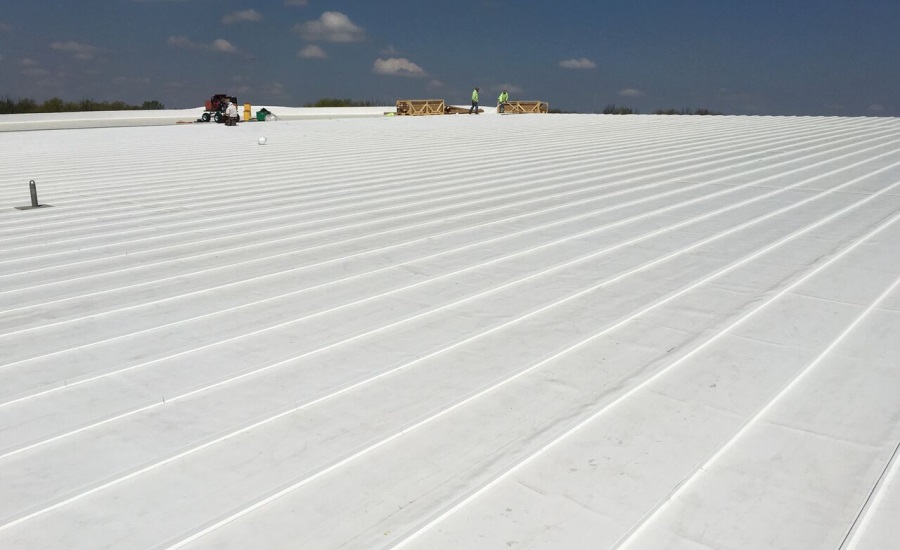TPO Roofing
If you’ve seen a bright white roof, you may be familiar with TPO roofing. As one of the most common roof types of commercial facilities, TPO has some of the best energy savings for single-ply membrane roofing!



TPO ROOFING INSTALLATION
After the existing substrate is prepared, either by cleaning or removing the existing roof, the insulation is installed. There are a few types of insulation options the facility manager/owner can choose from:
- Polyisocyanurate (Polyiso) – The most used insulation type for roofing applications, Polyiso is more expensive but pays off with a higher R-value rating.
- Expanded Polystyrene (EPS) – With the highest R-value per dollar, EPS is used for roof, wall, and floor insulation. EPS can be used for ground contact and does not retain water over time.
- Extruded Polystyrene (XPS) – Usually defined by the blue, green, or pink color, XPS falls between Polyiso and EPS in the price range and performance range. XPS is semipermeable with a perm rating of 1.
The TPO membrane can be attached to the cover board with a bonding adhesive or mechanically fastened. When the membrane is rolled out, the contractor returns and uses a hot-air gun to weld the seams together.
